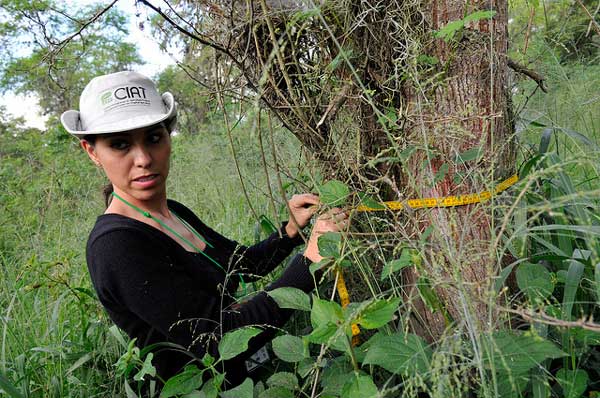The Study: Lawlor, K, E.M. Madeira, J. Blockhus, and D. J. Ganz. 2013. Community participation and benefits in REDD+: A review of initial outcomes and lessons. Forests 4, 296-318; doi:10.3390/f4020296
The Big Question: Forests contain an estimated 80 percent of the above-ground and 40 percent of below-ground terrestrial carbon, and currently hold more carbon than earth’s atmosphere. Many of the most vulnerable of those forests are in the tropics, and the people living near them are also vulnerable, often poor and with little political power — which means it might be in their short-term economic interests to clear or exploit the forest.
So can forest conservation programs in developing countries also reduce rural poverty and save the environment? A tall order, but that is the “win-win” goal of REDD+ projects, which look to reduce emissions from deforestation and degradation and enhance forest carbon stocks. But opponents of REDD+ fear its projects are just another big conservation land grab, leading to the loss of land and livelihoods for the poor.
Study Nuts and Bolts: Both sides of the debate need more data about what ongoing projects are achieving, not just about how various REDD+ projects effect land use change or carbon storage, but also how they impact the well-being of local communities. Do the projects create jobs or enhance land tenure? Can communities can participate in meaningful ways?
To answer the latter questions across projects operating in diverse ecosystems with diverse methods and in diverse socio-political contexts, you need a conceptual framework. This study develops such a framework and applies it to 41 projects across 22 developing countries in Africa, Asia, and Central and South America. The projects range from dry, degraded grasslands to intact tropical forests, and from the tiny (the just 42 hectares Plan Vivo project in Nicaragua) to the enormous Noel Kempff project in Bolivia, which covers nearly 2,500 square miles.
The Findings: The authors found that just over 50% of the 40 REDD+ projects they analyzed provided modest but tangible economic benefits for communities — ranging from jobs to payments to in-kind contributions such as electrification projects or roads. While that may be good news for some communities, the benefits may not be substantial enough to make a real contribution to reducing rural poverty.
The more important benefits and lasting benefits may relate to tenure security, according to Erin Myers Madeira, senior advisor for forests and climate at The Nature Conservancy and a study co-author. “The study found many projects are helping populations gain tenure rights, and no projects appear to be weakening tenure rights,” says Madeira. “This finding contrasts with fears that REDD+ might induce land grabs. Enhancing local populations’ land claims may transform the communities in ways that remain long after the carbon payments have run out.”
The hardest question is how meaningfully those communities have participated in decisions about the project, adds Madeira. A majority of projects are obtaining the informed consent of local populations; however, the extent of participation remains uneven.
What it All Means: As with much about conservation, what you see in a REDD+ project depends on how you look at it, especially the scale at which you look at it.
REDD+ projects’ greatest contributions to poverty alleviation may be through solidification of tenure rights, securing access to forest resources, and enhancing communities’ capacity for forest management. Agroforestry, forest restoration, and afforestation/reforestation initiatives seem to have greater potential to improve income for poor communities than projects whose main goal is to avoid deforestation. REDD+ projects might not be an engine of economic growth in the absence of complimentary policies and programs supporting sustainable rural development.
At a global scale, however, regional differences become apparent. Africa, for example, accounts for most of the jobs and payments, but a far smaller fraction of the carbon benefits, suggesting that landscapes with the largest carbon stocks and potential climate gains will often not overlap with those regions home to the most potential beneficiaries.
This study also highlights the challenges of promoting meaningful participation by rural communities in REDD+ projects. Difficult questions remain about what exactly it means for a community to be informed. REDD+ projects can be complex arrangements, with multiple players, conflicting goals and long-lasting consequences. Providing information may be just the first of many steps to ensuring communities are able to make reasoned decisions about what is in their best interests.




Join the Discussion
1 comment